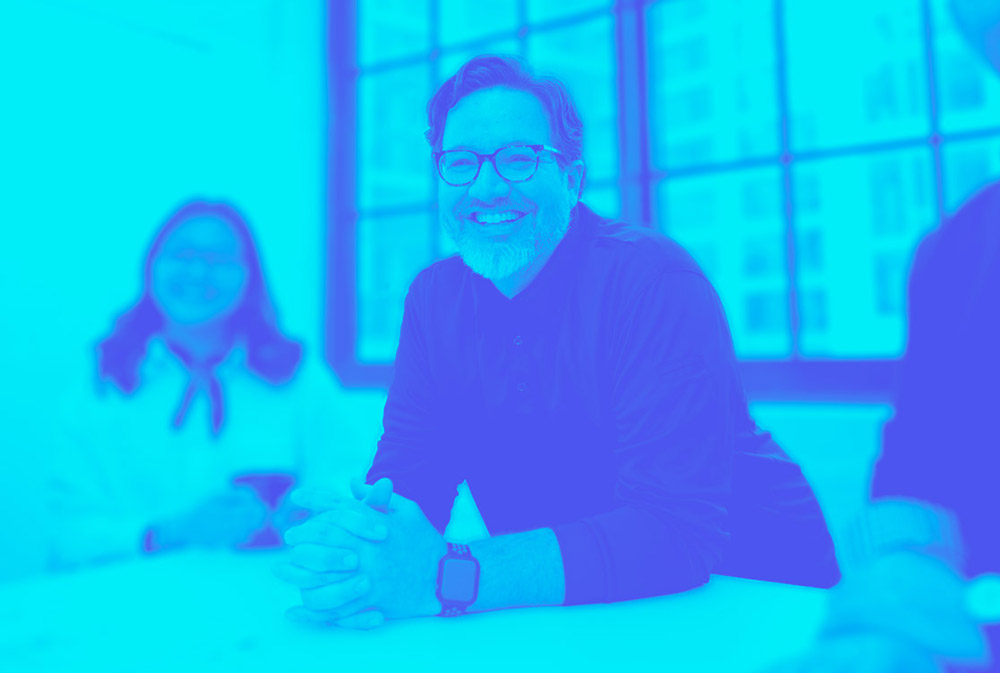Thinking Ahead and Looking Back: Q+A with Mark Ramirez, AIA

We sat down with Mark Ramirez, AIA, Managing Director and Principal at Hickok Cole, to gain insight into his vision for the future of the firm and the industry as a whole, and his reflections on the past. Mark has been in the architecture space for 29 years and joined Hickok Cole back in 1998. Uncover the years behind and the work ahead.
Q: What are the best ways that leaders can support other leaders?
A: Listen and ask questions, lots of questions. Leadership is about helping people get where they need to be, even if they can’t see the path themselves. Even though I’m a director, the less I direct, the more effective I am. It’s about empathy and camaraderie. We spend considerable time talking about how we engage and collaborate with clients. We are constantly asking ourselves: What’s the best strategy? How can we best meet client needs?
WHAT’S NEXT
Q: Where do you see the firm going in the future, and what do you hope for?
A: The firm will continue to grow through our innovation-first mindset and commitment to design and project excellence. What excites me most is the opportunity to contribute to the revitalization of smaller gateway cities that have been overlooked for decades. These communities, particularly in places like the Rust Belt, are ripe for thoughtful transformation through well-designed office, housing, commercial, and cultural projects. I’m excited about any kind of adaptive reuse. The sheer number of aging malls that exist and downtowns that have the potential to be redeveloped into amazing mixed-use spaces.
Q: How do you think the firm can continue and expand on our mission to do work that matters?
A: We excel at redefining design methodologies and combining them in new and interesting ways to tackle both client challenges and broader societal issues – from achieving high-performance goals to driving urban revitalization. To expand on this mission, I think we need to continue pushing the boundaries of what’s possible while actively seeking out projects that create meaningful impact.
Q: What does the future of Hickok Cole look like?
A: I’m excited about the future and believe we are poised for explosive growth. We have a strong foundation, and there’s tremendous energy and new ideas from the next generation of leaders. I like and trust the people I work with. I’m excited about expanding into different kinds of design work and tackling complex problems that others can’t solve. With the talent we have, the possibilities feel limitless.
Q: Where do you think the fields of architecture and design are headed?
A: AI will undoubtedly disrupt our industry, and while I’m not entirely sure what it will look like, I am excited to see where it leads. I’ve lived through two major technology shifts in our profession: first moving from hand drawing to AutoCAD and then from AutoCAD to Revit and BIM modeling. AI represents the third transformation. We will stay flexible and explore how this technology can help innovate and design faster and more effectively. There will always be a fundamental need for architects, interior designers, and brand strategists; creativity and strategy cannot be replaced. The younger generation will show us new possibilities while those of us with experience will help make them a reality.
Q: What should someone hiring Hickok Cole know?
A: We embrace innovation balanced with pragmatism. We are strategists and problem solvers at heart; the more complex the problem, the better we perform. What sets us apart is our ability to maximize efficiency while creating compelling environments that deliver real value.
LOOKING BACK
Q: What is your favorite Hickok Cole memory?
A: This takes me back to the firm’s early days when we were much smaller and scrappier. We had an office in the Dupont Circle neighborhood of Washington, DC, with front steps where everyone would hang out after work. One afternoon, a water balloon fight broke out, and I ended up chasing principals around the block, pelting them with water balloons. For me, this captures our tight-knit, candid culture that continues today.
Q: If you had to pick one standout/favorite project you’ve been involved in, which one would it be?
A: Without question, it’s the National Geographic Museum of Exploration. While my favorite project is always my current project (because if not, something’s got to change!), this project stands out for its complexity and innovation. What makes this project special is the opportunity to integrate five to six unique, cutting-edge systems into a comprehensive visitor experience. True innovation requires an understanding of where the limits are so you can strategically push beyond. At National Geographic, we’ve done just that.
Q: What has being a leader taught you?
A: Leadership has taught me that motivating and inspiring people is fundamentally different from anything you learn in school. I’ve learned that employees don’t adapt to their manager’s style or personality; it’s the leader’s responsibility to adapt to their team members. Effective leadership requires flexibility. Each person on your team (regardless of level) has unique motivations, preferences, and working styles. I’ve learned to leverage my strengths while adjusting my approach to each individual.
